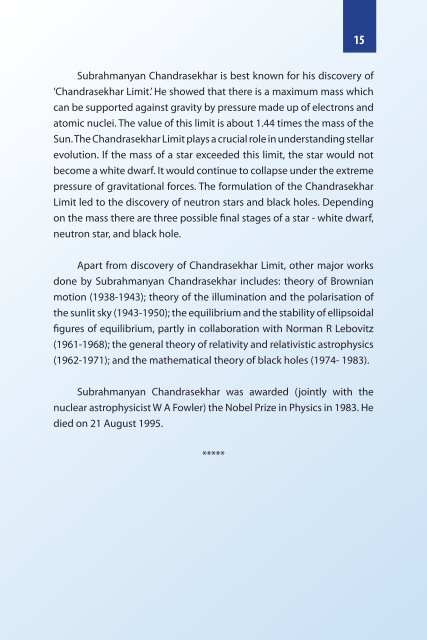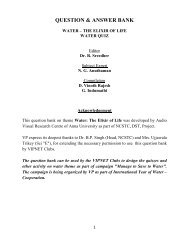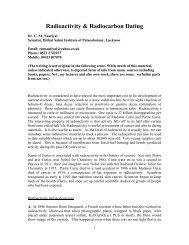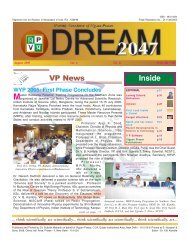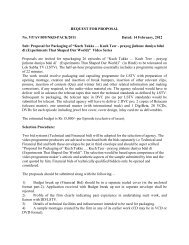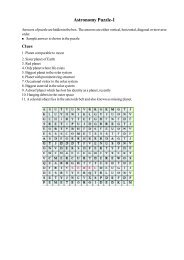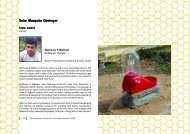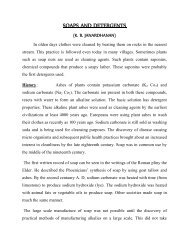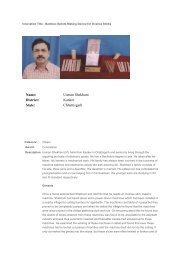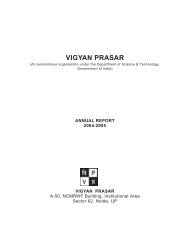Vidyarthi Vigyan Manthan: A national programme to ... - Vigyan Prasar
Vidyarthi Vigyan Manthan: A national programme to ... - Vigyan Prasar
Vidyarthi Vigyan Manthan: A national programme to ... - Vigyan Prasar
Create successful ePaper yourself
Turn your PDF publications into a flip-book with our unique Google optimized e-Paper software.
Subrahmanyan Chandrasekhar is best known for his discovery of<br />
‘Chandrasekhar Limit.’ He showed that there is a maximum mass which<br />
can be supported against gravity by pressure made up of electrons and<br />
a<strong>to</strong>mic nuclei. The value of this limit is about 1.44 times the mass of the<br />
Sun. The Chandrasekhar Limit plays a crucial role in understanding stellar<br />
evolution. If the mass of a star exceeded this limit, the star would not<br />
become a white dwarf. It would continue <strong>to</strong> collapse under the extreme<br />
pressure of gravitational forces. The formulation of the Chandrasekhar<br />
Limit led <strong>to</strong> the discovery of neutron stars and black holes. Depending<br />
on the mass there are three possible final stages of a star - white dwarf,<br />
neutron star, and black hole.<br />
Apart from discovery of Chandrasekhar Limit, other major works<br />
done by Subrahmanyan Chandrasekhar includes: theory of Brownian<br />
motion (1938-1943); theory of the illumination and the polarisation of<br />
the sunlit sky (1943-1950); the equilibrium and the stability of ellipsoidal<br />
figures of equilibrium, partly in collaboration with Norman R Lebovitz<br />
(1961-1968); the general theory of relativity and relativistic astrophysics<br />
(1962-1971); and the mathematical theory of black holes (1974- 1983).<br />
Subrahmanyan Chandrasekhar was awarded (jointly with the<br />
nuclear astrophysicist W A Fowler) the Nobel Prize in Physics in 1983. He<br />
died on 21 August 1995.<br />
*****<br />
1


